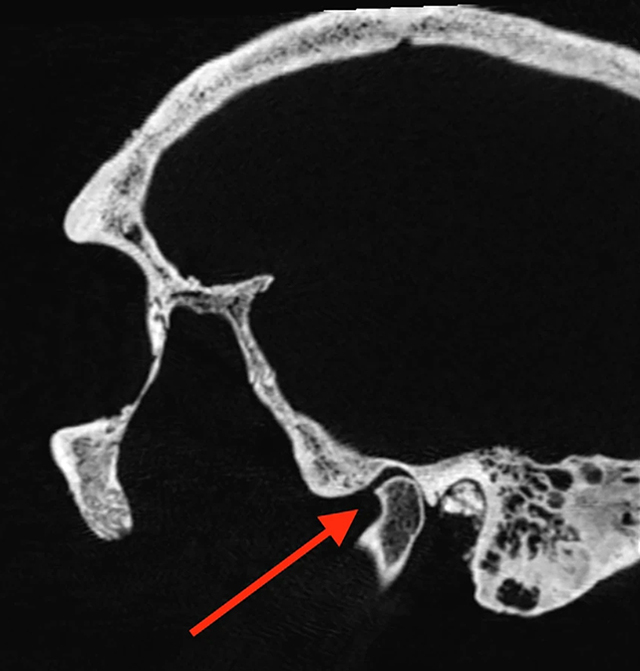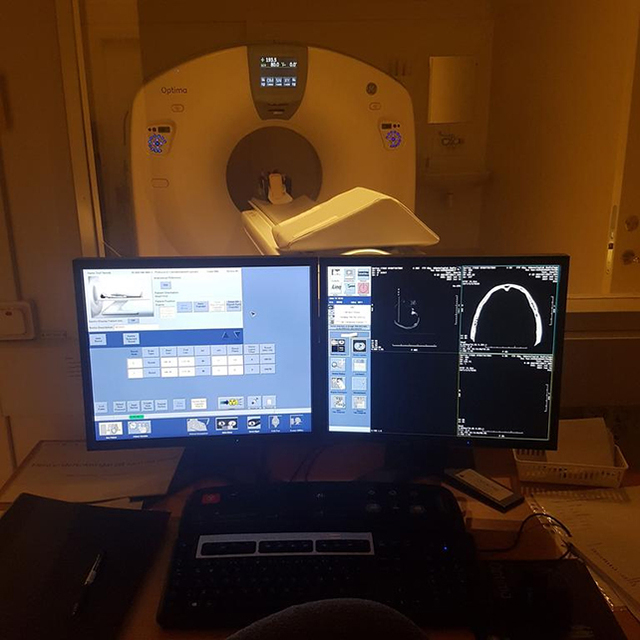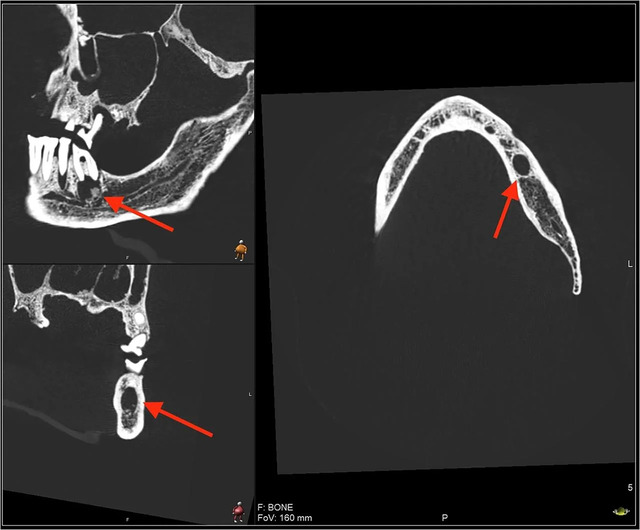The Vikings, known for their seafaring prowess and legendary battles, have long been admired for their strength and resilience. However, a recent study using advanced CT scans of Viking-age skulls has uncovered a more challenging side of their lives—chronic diseases and health struggles. These findings offer a surprising look at the health conditions that plagued the Vikings, revealing a society where infections, tooth decay, and skeletal diseases were as common as their legendary raids. This article explores how modern technology has shed light on the health challenges of one of history’s most iconic civilizations.
The Varnhem Abbey Discovery: Viking-Age Skull Analysis
The study, led by researchers from the University of Gothenburg, focused on 15 Viking-era skulls found at the well-known archaeological site of Varnhem Abbey in Sweden. Varnhem Abbey is significant not only for its religious importance but also as a burial site for several Swedish kings. The skulls date back to the 10th and 12th centuries, providing a valuable snapshot of Viking health. These individuals lived during the peak of Viking civilization, a time when the Vikings were known for their seafaring prowess, trade, and conquest. However, the health of these individuals paints a picture of a society burdened by chronic ailments, many of which would have significantly impacted their quality of life.
The Widespread Diseases: Dental Issues, Skeletal Conditions, and More

Using CT scanning technology, researchers were able to examine the skulls in great detail, uncovering a host of diseases and health conditions that were prevalent among Viking-age individuals. Among the most common issues were severe dental problems, including tooth decay, periodontal disease, and periapical infections. Dental health was a major concern for many Vikings, as the lack of modern dental care meant that even minor issues could lead to significant pain and complications. The CT scans revealed that these dental issues were not isolated cases but were widespread, affecting a significant portion of the population.
In addition to dental problems, the scans also uncovered evidence of skeletal conditions, such as osteoarthritis and other joint issues. These conditions would have caused significant pain and mobility problems, making daily activities more difficult for affected individuals. The study also found signs of sinus infections, ear infections, and other chronic conditions that would have contributed to the overall health struggles of the Viking population. These findings are significant because they show that life in the Viking age was not just about raids and exploration but also about enduring a range of health challenges that modern medicine has long since alleviated.
Video
Check out the video on CT scans of Viking-age skulls revealing widespread disease – it’s an eye-opening discovery!
CT Scanning Technology: A Non-Invasive Method to Unlock the Past

One of the most exciting aspects of this study is the use of CT scan technology, which allows researchers to examine ancient remains in a non-invasive way. Traditional methods of studying skeletal remains often involve physical examinations, sometimes requiring the removal of bone or tissue for analysis. In contrast, CT scans provide detailed, three-dimensional images of the skulls without damaging the remains, allowing researchers to preserve the integrity of the artifacts while still extracting valuable information.
CT scans work by using X-rays to create detailed images of the inside of objects. These images can then be analyzed to reveal hidden details that might not be visible through conventional methods. In the case of the Viking skulls, the scans allowed scientists to detect bone alterations linked to chronic infections, such as changes in the mastoid process and sinusitis-related bone changes. The scans also helped identify areas of the skull that showed evidence of previous infections, providing insight into the health conditions that affected these individuals during their lifetime.
Dental and Maxillofacial Diseases: Insights from the Skulls
Dental problems were particularly prominent in the Viking skulls analyzed in the study. The scans revealed a high prevalence of dental caries, or tooth decay, which was likely caused by the Viking diet, which included sugary foods like honey and fermented beverages. Periodontal disease, a common problem in ancient populations, was also widespread, affecting the gums and tissues surrounding the teeth. In more severe cases, periapical infections, which occur when bacteria enter the tooth root, were found. These infections would have caused intense pain and could have been life-threatening if left untreated.

The analysis of the skulls also provided insights into other maxillofacial diseases, which affect the bones of the face and jaw. The researchers found signs of bone alterations that were likely the result of long-term dental infections. These infections would have had a significant impact on the individual’s ability to eat, speak, and perform daily tasks. The presence of these diseases in the Viking skulls highlights the difficulties faced by individuals in the Viking age when it came to managing their health, particularly dental and oral care.
Bone Alterations and Infections: What the Skulls Reveal About Viking Health
In addition to dental issues, the CT scans revealed a variety of bone alterations that were linked to chronic infections and health conditions. One of the most striking findings was evidence of osteoarthritis, a condition that causes the cartilage in joints to wear down over time, leading to pain and stiffness. This condition is common in older individuals, but the presence of osteoarthritis in the Viking skulls suggests that joint issues were widespread and affected individuals of various ages.
The CT scans also identified changes in the bones of the mastoid process, a part of the skull behind the ears, which can be caused by chronic ear infections. Sinusitis-related bone changes were also evident, indicating that infections in the sinuses were another common health problem for Vikings. These findings suggest that chronic infections were a significant issue for Viking-age individuals, and the lack of antibiotics and modern treatments meant that these infections often went untreated, leading to long-term health problems.
Social Implications of Viking Health: The Impact of Disease on Society
The widespread health issues revealed by the CT scans provide valuable insights into the social and economic conditions of Viking society. The fact that many Viking-age individuals suffered from chronic diseases and infections suggests that health care, if it existed, was rudimentary at best. Without access to modern medicine, individuals were left to cope with illnesses and pain in ways that would have limited their productivity and quality of life.
Health problems, particularly those related to dental and skeletal conditions, may have had social implications as well. In a society that valued physical strength and mobility, individuals suffering from chronic pain or disabilities may have faced challenges in fulfilling their roles within the community. This could have affected their ability to participate in raids, farming, or other essential activities, impacting their social standing and livelihood.
Future Studies: Expanding Research on Viking-Age Health
The study of Viking health is far from over, and the use of CT scan technology has opened the door for further research into the health conditions of ancient populations. The non-invasive nature of CT scanning makes it an invaluable tool for studying human remains from various archaeological sites without causing damage. Researchers plan to expand their studies by analyzing more skulls from different Viking-age populations, which could provide even more insights into the health and living conditions of the Vikings.
Future studies could also explore the connection between diet, lifestyle, and health in Viking societies, shedding light on how the environment and cultural practices shaped their overall well-being. By comparing Viking health with other ancient populations, researchers may gain a deeper understanding of the universal challenges that people faced in the past and how those challenges influenced the course of history.
Video
Watch the video to uncover what the Viking disease really is and whether it was truly Viking – it’s a fascinating mystery!
Conclusion: Understanding Viking-Age Life Through Modern Technology
The discovery of widespread health issues among Vikings challenges the common image of these fierce warriors, revealing the hidden struggles they faced in everyday life. Through modern technology, we now have a deeper understanding of the physical toll that infections, diseases, and poor dental care took on Viking populations. As we continue to explore their history, these findings remind us that even the strongest civilizations had to confront the universal challenges of health and survival. The Vikings may have been legendary, but their lives were marked by the same vulnerabilities we all share.



